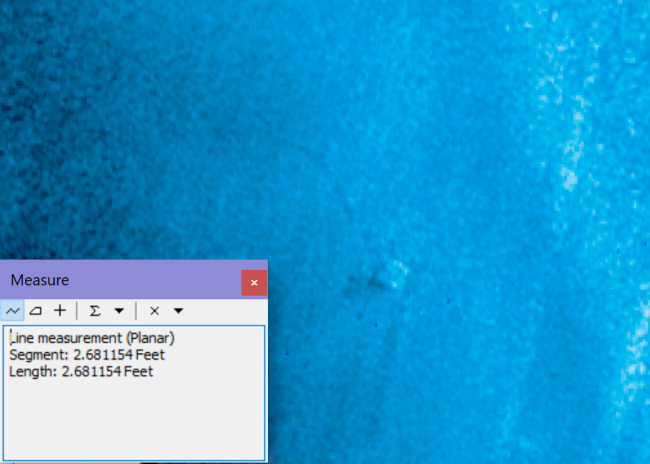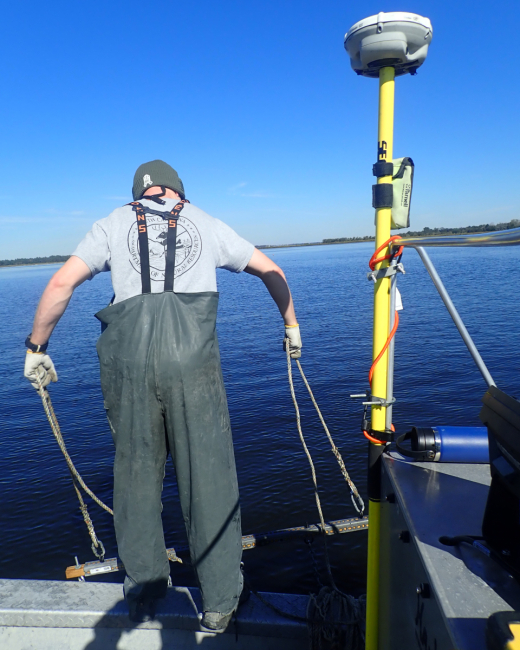Guest blog by: Lauren Faulk, Wildlife Biologist, South Carolina Department of Natural Resources
It was a muggy summer morning in Charleston, South Carolina, when several biologists from the South Carolina Department of Natural Resources Shellfish Research Section set out on our first attempt at removing marine debris at the bottom of the Charleston Harbor.
The derelict crab trap removal project team, with funding from the NOAA Marine Debris Program, has already devoted several days to mapping the bottom of the Ashley River in Charleston Harbor using a side-scan sonar system. We used a mapping program to view the side-scan data we collected, and scoured the maps to pinpoint and mark potential derelict crab traps. Once we had an idea of how many abandoned traps were lurking beneath the surface, we built a retrieval device – lovingly referred to as “The Retriever” – consisting of a series of flexible grappling hooks designed to drag along the bottom of these waterways and snag traps. We were all set, but the question remained: would we be able to recover the abandoned traps hidden in the murky depths?
We deployed The Retriever in the Ashley River, targeted our first potential derelict trap, and felt it snag on something about 20 feet below the surface. The team hauled on the lines, eager to see what we had hooked. Success! We officially retrieved our first subtidal derelict trap with the help of our maps and The Retriever. This marked an important milestone in our efforts to use remote sensing technology to investigate and address the issue of derelict crab traps in South Carolina estuaries.
Crabbing is a popular recreational activity and a valuable commercial industry in South Carolina. Traps become derelict when they are displaced or when their marking buoys are lost from events such as boat strikes, extreme weather, or equipment malfunction. These traps are particularly detrimental when they continue to “ghost fish,” catching and potentially killing a variety of organisms long after the gear has been lost. The true number and distribution of derelict crab traps in coastal South Carolina remains unknown. This project aims to improve our understanding of the impact of derelict fishing gear in South Carolina by mapping intertidal and subtidal areas of four estuaries.
Back out on the water, we’ve made great progress mapping the project sites using side-scan sonar and an uncrewed aerial vehicle. Our team has already categorized what appears to be almost 150 derelict traps from these maps. The project plans to remove a portion of the mapped traps and repurpose them to create a restoration oyster reef. Using this well-established restoration approach, the retrieved crab traps have their funnels closed to prevent ghost-fishing, are coated in cement to encourage oyster recruitment, and are secured in the intertidal zone where they provide an excellent surface for oyster attachment and growth. Stay tuned to the project profile for a link to our upcoming web-based survey for reporting derelict crab traps in South Carolina!




